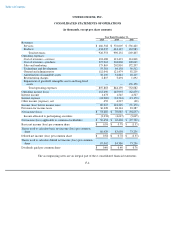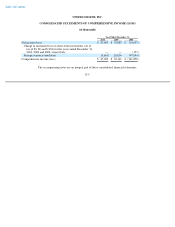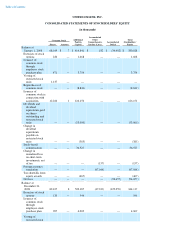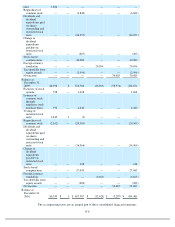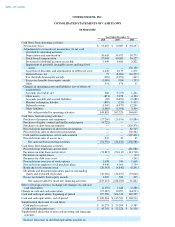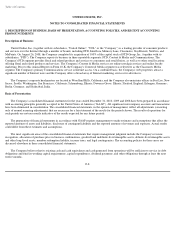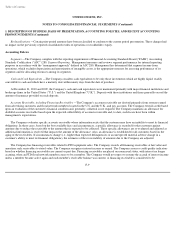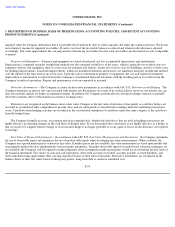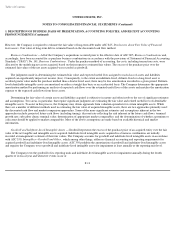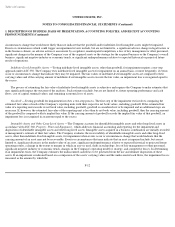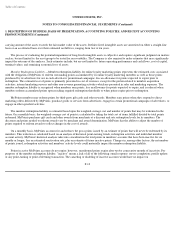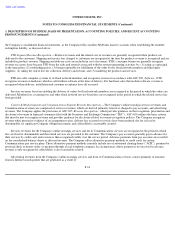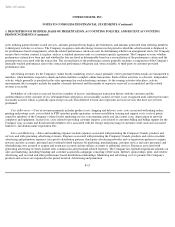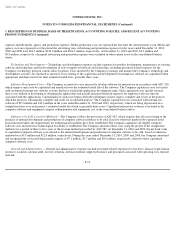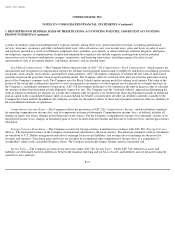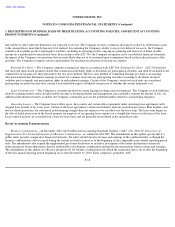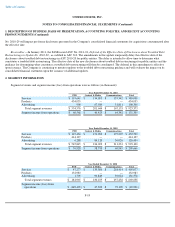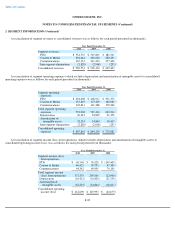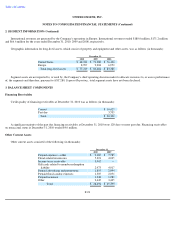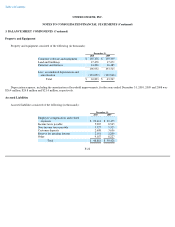Classmates.com 2010 Annual Report Download - page 118
Download and view the complete annual report
Please find page 118 of the 2010 Classmates.com annual report below. You can navigate through the pages in the report by either clicking on the pages listed below, or by using the keyword search tool below to find specific information within the annual report.
Table of Contents
UNITED ONLINE, INC.
NOTES TO CONSOLIDATED FINANCIAL STATEMENTS (Continued)
1. DESCRIPTION OF BUSINESS, BASIS OF PRESENTATION, ACCOUNTING POLICIES, AND RECENT ACCOUNTING
PRONOUNCEMENTS (Continued)
circumstances change that would more likely than not indicate that the goodwill and/or indefinite-lived intangible assets might be impaired.
Events or circumstances which could trigger an impairment review include, but are not limited to, a significant adverse change in legal factors or
in the business climate, an adverse action or assessment by a regulator, unanticipated competition, a loss of key management or other personnel,
significant changes in the manner of the Company's use of the acquired assets or the strategy for the acquired business or the Company's overall
business, significant negative industry or economic trends, or significant underperformance relative to expected historical or projected future
results of operations.
Indefinite-Lived Intangible Assets —Testing indefinite-lived intangible assets, other than goodwill, for impairment requires a one-step
approach under ASC 350. The Company tests indefinite-lived intangible assets for impairment on an annual basis, or more frequently, if events
occur or circumstances change that indicate they may be impaired. The fair values of indefinite-lived intangible assets are compared to their
carrying values and if the carrying amount of indefinite-lived intangible assets exceeds the fair value, an impairment loss is recognized equal to
the excess.
The process of estimating the fair value of indefinite-lived intangible assets is subjective and requires the Company to make estimates that
may significantly impact the outcome of the analyses. Such estimates include, but are not limited to, future operating performance and cash
flows, cost of capital, terminal values, and remaining economic lives of assets.
Goodwill —Testing goodwill for impairment involves a two-step process. The first step of the impairment test involves comparing the
estimated fair values of each of the Company's reporting units with their respective net book values, including goodwill. If the estimated fair
value of a reporting unit exceeds its net book value, including goodwill, goodwill is considered not to be impaired and no additional steps are
necessary. If, however, the estimated fair value of the reporting unit is less than its net book value, including goodwill, then the carrying amount
of the goodwill is compared with its implied fair value. If the carrying amount of goodwill exceeds the implied fair value of that goodwill, an
impairment loss is recognized in an amount equal to the excess.
Intangible Assets and Other Long-Lived Assets —The Company accounts for identifiable intangible assets and other long-lived assets in
accordance with ASC 360, Property, Plant and Equipment , which addresses financial accounting and reporting for the impairment and
disposition of identifiable intangible assets and other long-
lived assets. Intangible assets acquired in a business combination are initially recorded
at management's estimate of their fair values. The Company evaluates the recoverability of identifiable intangible assets and other long-lived
assets, other than indefinite-lived intangible assets, for impairment when events occur or circumstances change that would indicate that the
carrying amount of an asset may not be recoverable. Events or circumstances that may indicate that an asset is impaired include, but are not
limited to, significant decreases in the market value of an asset, significant underperformance relative to expected historical or projected future
operating results, a change in the extent or manner in which an asset is used, shifts in technology, loss of key management or other personnel,
significant negative industry or economic trends, changes in the Company's operating model or strategy, and competitive forces. In determining
if an impairment exists, the Company estimates the undiscounted cash flows to be generated from the use and ultimate disposition of these
assets. If an impairment is indicated based on a comparison of the assets' carrying values and the undiscounted cash flows, the impairment loss is
measured as the amount by which the
F-12


